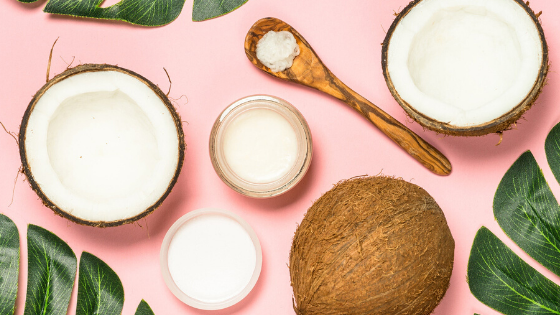
The use of coconut oil has been extremely popular in the culinary industry for many years now. It has become the go-to natural ingredient to replace artificial ingredients out there, and many people have been putting two and two together that coconut oils might be good for the skin as a natural moisturizer, cleanser, or body oil.
Coconut oil is a highly saturated oil that is traditionally made by extracting oil from raw coconuts and dried coconut kennels. It contains lauric acid which gives it its antimicrobial properties that can help protect against harmful microorganisms. When applied to the skin, it prevents the growth of these harmful microorganisms and improves the skin’s barrier function.
According to recent studies, coconut oil also helps reduce inflammation of the skin and relieve pain due to diseases like eczema, psoriasis, and contact dermatitis. And above all, coconut oil contains Vitamins E and A which contribute to anti-aging properties and reduce damage caused by free radicals and the sun. The natural moisturizing effect of oil leaves the skin soft and smooth.
So, after knowing the properties and benefits of using coconut oil on the skin, it leaves us one important question with regards to skincare: “How do I use coconut oil on my face?”
Coconut oil can affect the skin differently depending on the person’s skin type. It’s best to do your research first which coconut oil skincare trick works best for your skin, or if you should be using it at all.
Use it as a makeup remover. If you want to make the shift from chemical-based makeup removers to a natural one, then using coconut oil might be the one for you. It will act as a completely natural dissolvent oil for any type of makeup.
Use it to lock the moisturizer in. Coconut oil can be an effective moisturizer and aid in the treatment of dry skin and eczema, but a lot of beauty experts say that it is more effective as a sealer rather than a moisturizer. If your skin is on the dryer skin, you can apply it to your face after putting on moisturizer to lock it in for a hydration boost.
Use it as a face cleanser. Make it as the first step in your skincare routine. You can start by applying small quantities of coconut oil to cleanse your face. You can adjust the amount of oil you put on if you don’t feel your skin reacting negatively to it. Then rinse it thoroughly with a gentle face wash after.
Helps with wound healing. According to studies, treating wounds with coconut oil speeds up healing, improves antioxidants status, and increases levels of collagen which is an important protein that aids in wound healing. Coconut oil combined with an antibiotic applied to the skin is also effective in healing burn wounds.
Add in a DIY face mask. Treat breakouts and irritated skin by adding coconut oil on your next DIY face mask. Try a combination of turmeric, lemon juice, honey, and of course, coconut oil. Many claim that it soothes the skin and helps relieve stress.
Add in a DIY lip scrub or lip balm. Dry, cracked lips are common during summer and winter and it can be very painful. Rather than using Vaseline or Chapstick which provides little relief, try combining sugar (for gentle scrubbing, honey, and coconut oil for a more moisturizing and soothing effect on your chapped lips.
Use it as an eye cream. Instead of using your usual eye cream, you can try dabbing a tiny amount of coconut oil under your eyes. It will help hydrate and protect that delicate skin under your eyes.
Who should not use coconut oil?
The use of coconut oil as a beauty remedy is not ideal for everyone. For those who have oily skin, you may want to avoid it as it blocks pores and causes blackheads. You can test it in small amounts if you want and slowly observe your skin’s tolerance to coconut oil.
Same with those who have sensitive skin. You can start by using small quantities of oil to small sections of the skin and see if it doesn’t cause irritation.
